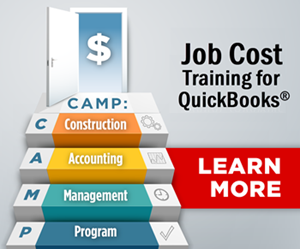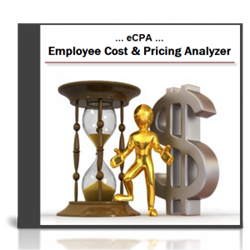Every business owner needs to know how to calculate their gross profit margin (%) and net profit margin (%).
After all, it’s what shows you how much profit you’re making!
As a business owner or bookkeeper, the most important numbers you’ll ever need to know may very well be your profit margins.
There are two kinds of profit margins: gross profit margin and net profit margin.
Gross Profit Margin

Gross Profit Margin, a critical financial metric, is the percentage of a company’s revenue they get to keep as “gross profit” after subtracting the direct costs required to produce the goods or services they sell (also known as the Cost of Goods Sold (COGS).)
It is a measure of operational efficiency because the higher a company’s gross profit margin, the more they earn on each dollar of sales. Those earnings can be utilized to pay other costs or satisfy debt obligations. The Gross Profit Margin is often synonymous with Gross Margin Ratio.
Net Profit Margin
Net Profit Margin is the percentage of net income or profit generated from a company’s total revenue. It is a critical financial metric that indicates how efficiently a company converts its sales into profits. It illustrates how much money (as a %) you retain as profit after you pay all of your costs of production, company overhead expense, interest, and taxes. A higher net profit margin reflects better profitability, while a lower margin may suggest challenges in cost management or pricing strategies.
How Do You Calculate Profit Margin?
It depends on whether you’re trying to calculate gross profit margin or net profit margin. Both tell you important (but different) information about the overall financial health of your business. So let’s look at them one at a time.
How To Calculate Gross Profit Margin
- Gross Profit ($) = Total Revenue – Cost of Goods or Services Sold
- Gross Profit Margin (%) = Gross Profit / Total Revenue x 100 (yields a percentage)
Gross Profit and Gross Profit Margin Calculation: An Example
You own a contracting business, and in one week…
- Your total revenue = $10,000
- Cost of Services Sold: Two employees paid $1,600 gross payroll + another $1,000 for burden costs + $3,400 for construction materials = $6,000 ‘production cost.’
To compute gross profit for this example:
$10,000 gross revenue – $6,000 production cost = $4,000. So, your gross profit amount for the week is $4,000.
To calculate your gross profit margin percentage:
$4,000 / $10,000 x 100 = 40%. So, your gross profit margin for the week is 40%.
How to Calculate Net Profit Margin
- Net Profit ($) = Gross Profit (as computed above) less Company Overhead, Interest, and Taxes (also known as Net Income or “the bottom line” in financial statements).
- Net Profit Margin (%) = Gross Profit less Company Overhead, Interest, and Taxes / Total Revenue x 100
Net Profit and Net Profit Margin Calculation: An Example
Let’s say you own the same contracting business as the first example, but instead of just subtracting the cost of goods and services sold, this time, you also include all of your company overhead expenses, interest, and taxes. We determine that the additional cost is $3,000.
To compute net profit for this example:
$10,000 Revenue – $6,000 production costs – $3,000 company overhead, interest, and taxes = $1,000. So your Net Profit amount for the week is $1,000.
To calculate your net profit margin percentage:
$1,000 Net Profit / $10,000 Revenue x 100 = 10%. So your Net Profit margin for the week is 10%.
Or you can look at it this way: for every $100 you earn, you will keep a net profit of 10% or $10.
Don’t want to bother calculating YOUR numbers by hand? Use this handy calculator!
Drop in your numbers and see the results…
Are You Clearer on How To Calculate GROSS and NET Profit Margins?
I hope this helped.
Using QuickBooks To Automatically Calculate Gross and Net Profit Margins
Of course, the fastest and easiest way to quickly see both your Gross and Net Profit dollars and percentages is to design your QuickBooks accounting system to automatically display those numbers on your Profit & Loss reports – for your company totals, or job by job.
![]()
People Also Ask
FAQs (Frequently Asked Questions)
1. What is gross profit margin?
Gross profit margin is the percentage of revenue remaining after subtracting the cost of goods sold (COGS) related to that revenue. It measures how efficiently a company produces goods or services.
2. How do I calculate gross profit margin?
First, determine your Gross Profit dollar amount. Gross profit is calculated as Total Revenue – COGS. Gross profit margin converts the dollar amount to a percent (%). It’s computed as (Gross Profit / Total Revenue) x 100.
3. What is net profit margin?
Net profit margin is the percentage of revenue remaining after all company expenses, including COGS, overhead, interest, and taxes, are deducted. It reflects overall profitability.
4. How do I calculate net profit margin?
First, determine your Net Profit dollar amount. Net profit is calculated as Gross Profit – Overhead – Interest – Taxes. Net profit margin converts the dollar amount to a percent (%). It’s computed as (Net Profit / Total Revenue) x 100.
5. Why are gross and net profit margins important?
These metrics provide insights into operational efficiency and overall profitability, which helps businesses make informed financial decisions.
6. What are common mistakes when calculating profit margins?
Common mistakes include not accurately accounting for COGS, overhead, interest, and taxes, leading to incorrect profit margin calculations.
7. How can QuickBooks help in calculating profit margins?
First, you will establish your Chart of Accounts to assign your income and cost accounts to the correct Account Type. Then, you can customize your QuickBooks Profit & Loss report to display gross and net profit margins. Accurate, real-time financial reports that display your profit margins contribute to better decision-making.
8. Can profit margins vary between industries?
Yes, profit margins can vary significantly between industries due to different cost structures, pricing strategies, and operational efficiencies.
9. How can I improve my profit margins?
Improved profit margins are based on factors such as increasing revenue, reducing COGS, and managing overhead costs effectively. If you want to improve your profit margins, you’ll find that it’s essential to undertake strategic planning and perform regular financial analysis.
10. Where can I find more resources on profit margins?
You can find additional resources and detailed guides on calculating and improving profit margins on the Build Your Numbers website.
![]()
QuickBooks or Enterprise has the power and flexibility to show income for each job, accumulate costs for each job, calculate gross profit for each job, and display both gross and net profit dollars and percentages for your entire business.
When you use your accounting software to help you see and use these critical numbers, you continually improve your results. And, as you improve your results, you maximize your profits.
My goal is to help business owners (like you) learn how to use QuickBooks and Enterprise accounting software as “the tool of choice for the job at hand!”
If this information was helpful, it’s only one small example of how to use your numbers to boost your profits! Take a few minutes to check out this extensive (and affordable!) online QuickBooks subscription training series.
Alternatively, if you’d like individual coaching or have any questions, please give us a call or send an e-mail today.
A final question: Got employees?
Ever wonder whether YOU are earning enough – by all the costs for your employees in your bids?
Learn how to properly account for (automatically) and include all your employee costs in your bids.
Customer Praise For Diane Gilson, Info Plus Accounting, and BuildYourNumbers.com
⭐⭐⭐⭐⭐ From the Intuit FindAProAdvisor website:
“Diane is the expert of experts. I wouldn’t go anywhere else and feel that I found a pot of gold at the end of a rainbow. I am well taken care and so much of my business and financial reporting has been simplified by my work with Diane. There’s been a number of times where we would find double entries that I would have never noticed had I not set up things the way she suggested. Diane did a 35 point checkup on my books and developed a long-range plan that resulted in a set of books that I can cost account, pay commissions and accurately understand my bottom line. We once audited my Worker’s Comp policy and we discovered they charged me for a period that this particular company hadn’t even covered me for. I was able to get $4,500 back. That was actually money earned back! We don’t make those mistakes anymore because we have way better, tighter controls. And we are much more protected from fraud and embezzlement. I save money when I work with Diane. I think the most critical thing she provides to small businesses is the controller and expert level when you can’t necessarily afford to hire an in-house controller.”
See More Customer and Client Comments


